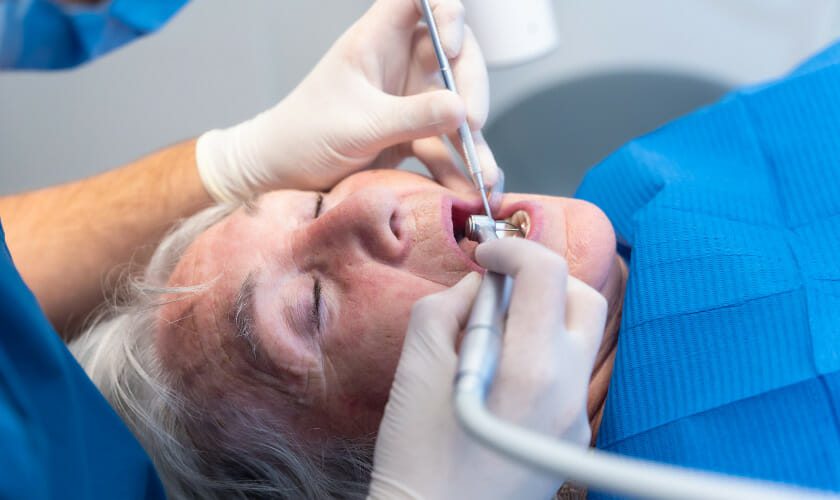Your teeth’ roots include little openings known as canals filled with blood vessels and nerve fibers that sustain and stimulate your teeth. These blood vessels and nerves are crucial to the health of your teeth, and if they become infected or damaged, they may start to hurt.
What Is A Root Canal?
An infected tooth’s damaged pulp is removed through root canal treatment. The natural function and stability of your smile can be preserved with root canal therapy, a standard alternative to the extraction of a badly damaged tooth.
Symptoms That You Need A Root Canal
- When a patient contacts us, one of the first things we hear from them is a complaint about a sharp pain that occurs when the tooth is subjected to pressure. This discomfort is a warning sign that you might need a root canal.
- Your gums’ pimples indicate that an infected fluid has leaked into the tissues from close to the root. If you notice these, there may be an abscess, which is an advanced stage of the infection. Your only option to stop the infection from spreading might be a root canal.
- A tooth’s root infection may be in its early stages if the gums are swollen.
- Discoloration of the gums might signify an infection at the tooth roots. You undoubtedly are familiar with your regular gum color, but if there is a darker-than-average region, a tooth infection close to the root may be to reason. Discoloration can happen when the pulp layer of harmed teeth has reduced blood supply or is infected with plaque.
- A decayed tooth serves as a shelter for microorganisms. The only specific treatment for infection caused by the decay of a dead pulp chamber is a root canal. A tooth that appears grey or black is probably dead.
How Long Does A Root Canal Take?
The number of appointments needed for root canal therapy will depend on the severity of the infection in your tooth. It typically takes 30 to 60 minutes to perform. A bigger tooth with many roots may require an hour and a half of treatment time.
What Happens During A Root Canal Treatment?
- Your dentist will take x-rays of your teeth before the treatment to determine the shape of the root canal itself. They will provide a local anesthetic to make the area around the tooth painless. You might feel a little pressure during the process, but you shouldn’t experience discomfort like with extractions, implants, and other oral surgery. To keep your mouth open and the area around the tooth dry while receiving treatment, your dentist will isolate the tooth once it has become numb by using a rubber dam.
- Your dentist will make a hole in the top of your tooth to access the root canal. Your dentist can use specialized tools to access the hole and remove debris from the pulp chamber, root canals, and the diseased pulp and damaged nerve tissue. The root canals will then be thoroughly cleaned to eliminate the bacteria and stop reinfection.
- Your dentist might begin shaping the root canals to prepare them for filling after carefully cleaning and sanitizing them. After shaping, your canals will undergo another cleansing. Your dentist will seal your canals to stop bacteria from penetrating your tooth by filling the canal with a rubber-like substance and adding adhesive cement.
- Filling the entrance hole completes the process. Sometimes the sealing is done on the same day as the root canal cleaning, or you might need to schedule a second appointment after the infection has had time to go away. If you need a second appointment, your dentist will cover the tooth with a temporary filling to prevent the growth of bacteria until you can have the permanent filling. Depending on your tooth’s weakness, your dentist may cover it with a crown or another dental restoration after sealing it.
A root canal operation may be the best action for you if you have a fractured tooth or suffer from excessive tooth sensitivity. Visit our dental office for further information.

